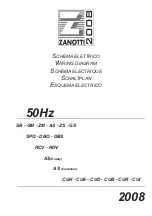
© 2011 Viking Preferred Service
11
Operation
Water Filtration System
The water filter is located in the upper right-hand
corner of the refrigerator compartment.
Note:
DO NOT
use with water that is
microbiologically unsafe or of unknown quality
without adequate disinfection before or after the
system. Systems certified for cyst reduction may
be used on disinfected waters that may contain
filterable cysts.
Replacing the Water Filter
Replacement water filters are available through
your local Viking Range Dealer. You may also order
filters by calling 1-888-845-4641 or online at
vikingrange.com
I
MPORTANT:
Air trapped in the water system may
cause water and filter to eject. Always dispense
water for at least 2 minutes before removing the
filter or blue bypass cap.
1.
Turn filter counterclockwise to remove.
2. Remove sealing label from replacement filter
and insert the filter end into the filter head.
3. Turn the filter clockwise until it stops. Snap the
filter cover closed.
Note:
The dispenser feature may be used without a
water filter installed. Your water will not be filtered.
If this option is chosen, replace the filter with the
blue bypass cap.
Refrigerator Water Filter
Cartridge Model RWFFR
Specifications:
Service Flow Rate (Maximum) ................... 0.78 GPM
...................................................................(2.9 L/min)
Rated Service Life ...........................................RWFFR
(750 gal. Max) ............................. 750 gal./2838 liters
Maximum Operating Temperature ........ 100°F/38°C
Minimum Pressure Requirement .......35 psi/241 kPA
Minimum Operating Temperature ............. 33°F/1°C
Maximum Operating Pressure ........120 psi/827 kPA
Cleaning
Both the refrigerator and freezer sections defrost
automatically. However, clean both sections about
once a month to avoid buildup of odors. Wipe
up spills immediately.
IMPORTANT:
Because air circulates between both
sections, any odors formed in one section will
transfer to the other. You must thoroughly
clean both sections to eliminate odors. To avoid
odor transfer and drying out of food, wrap or cover
foods tightly.
To Clean Your Refrigerator:
Note: DO NOT
use abrasive or harsh cleaners such
as window sprays, scouring cleansers, flammable
fluids, cleaning waxes, concentrated detergents,
bleaches or cleansers containing petroleum
products on plastic parts, interior and door liners or
gaskets.
DO NOT
use paper towels, scouring pads,
or other harsh cleaning tools.
1. Unplug refrigerator or disconnect power.
2. Hand wash, rinse, and dry removable parts and
interior surfaces thoroughly. Use a clean sponge
or soft cloth and a mild detergent in warm water.
3.
Wash stainless steel and painted metal exteriors
with a clean sponge or soft cloth and a mild
detergent in warm water.
4. There is no need for routine condenser cleaning
in normal home operating environments. If
the environment is particularly greasy or dusty,
or there is significant pet traffic in the home,
the condenser should be cleaned every 2 to 3
months to ensure maximum efficiency.
If you need to clean the condenser:
Ê
UÊ ,iÛiÊÌ iÊL>ÃiÊ}Ài°
Ê
UÊÊÊ Ê1ÃiÊ>ÊÛ>VÕÕÊVi>iÀÊÜÌ Ê>ÊÃvÌÊLÀÕÃ Ê
to clean the grille, the open areas behind
the grille and the front surface area of the
condenser.
Ê
UÊÊÊÊÊÊÊ,i«>ViÊÌ iÊL>ÃiÊ}ÀiÊÜ iÊwà i`°
5. Plug in refrigerator or reconnect power.
WARNING
EXPLOSION HAZARD
Use nonflammable cleaner.
Failure to do so can result in death, explosion,
or fire.












































